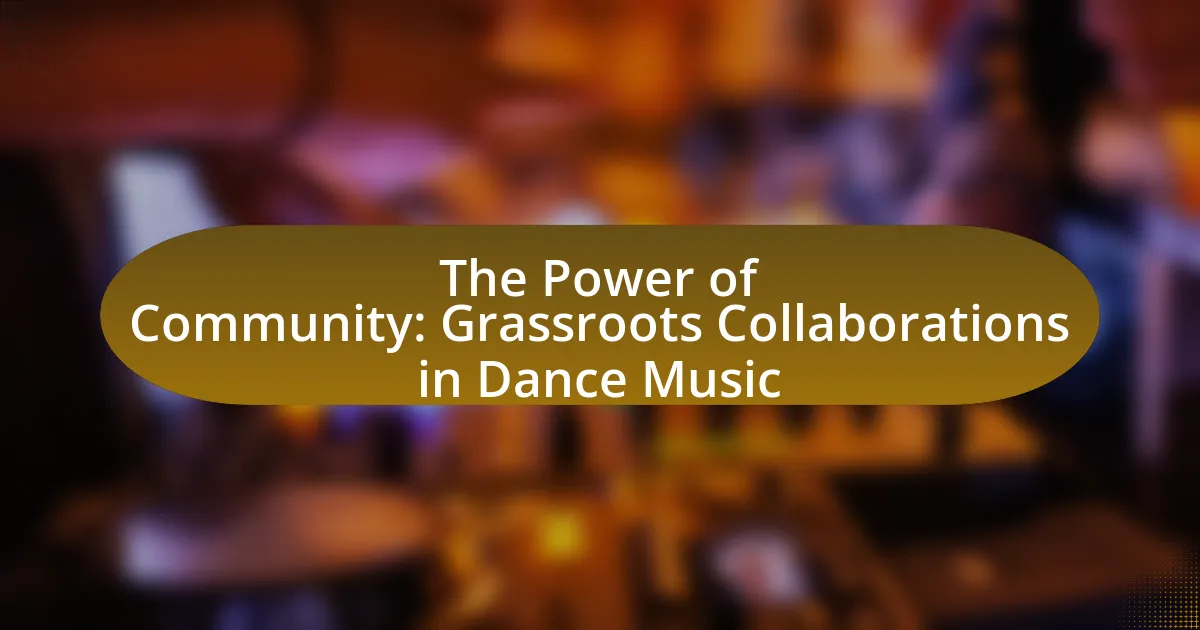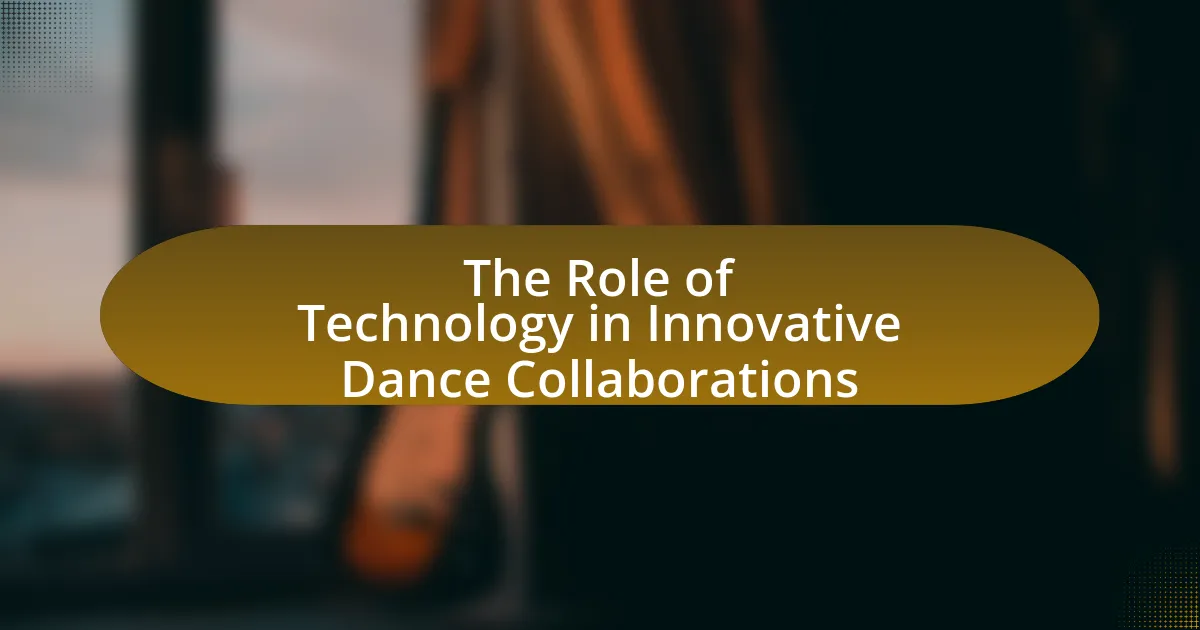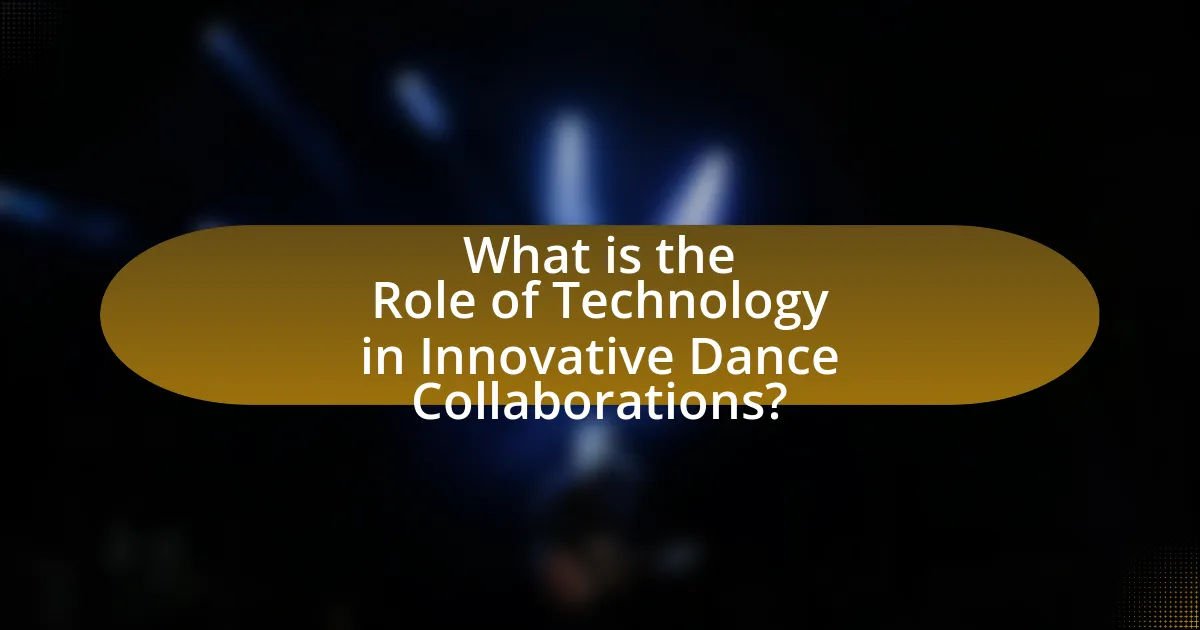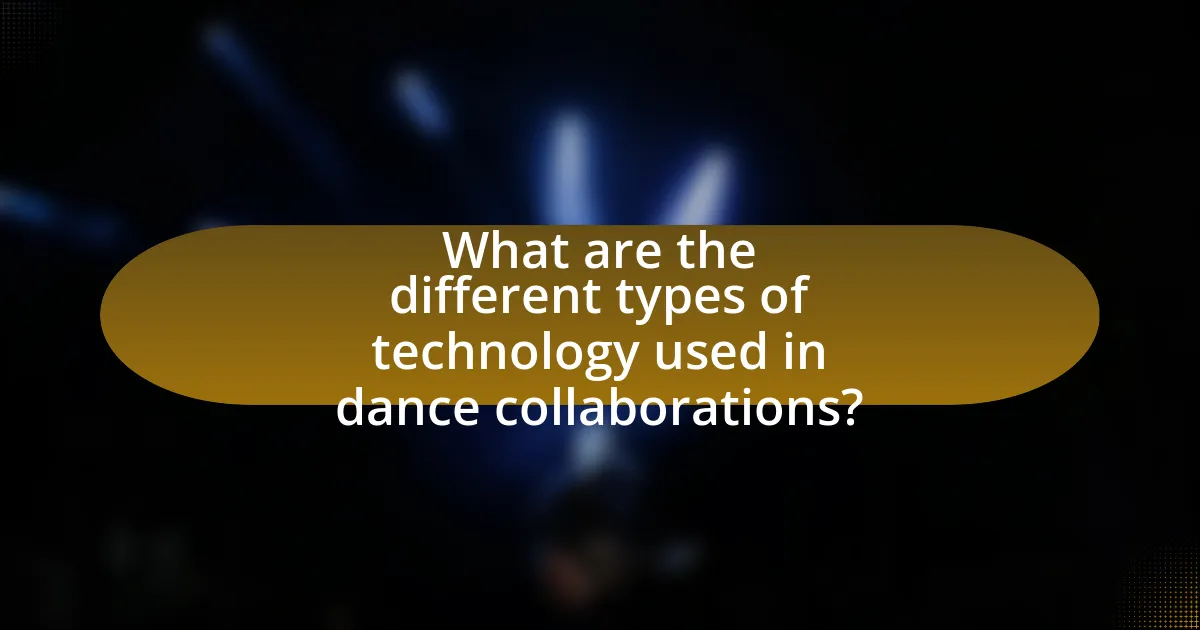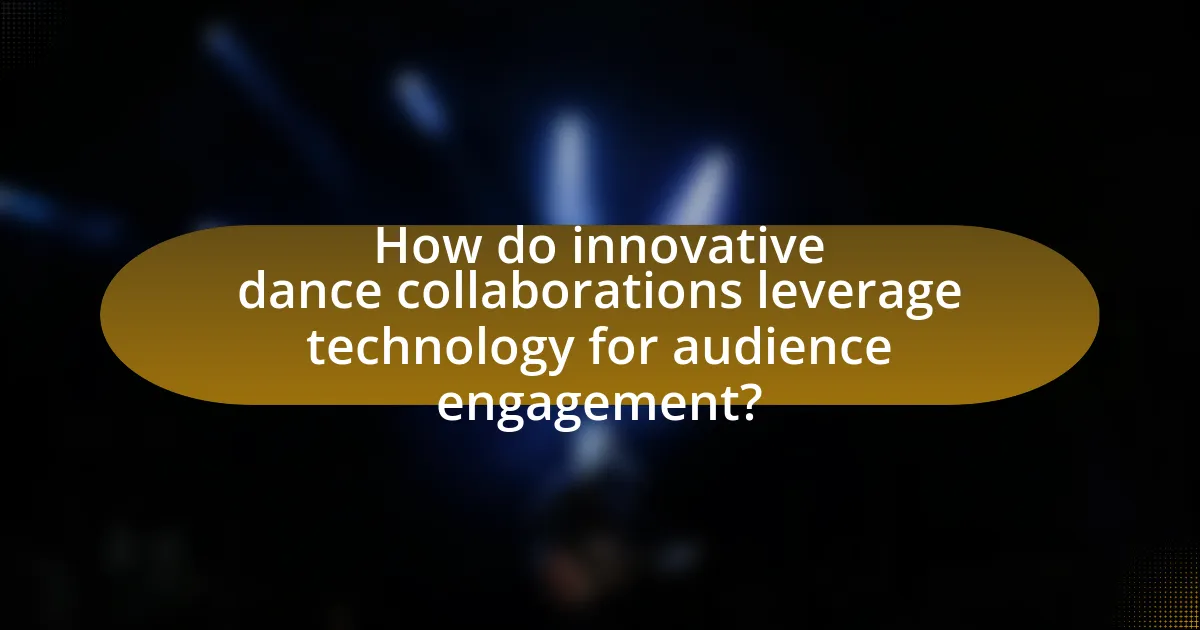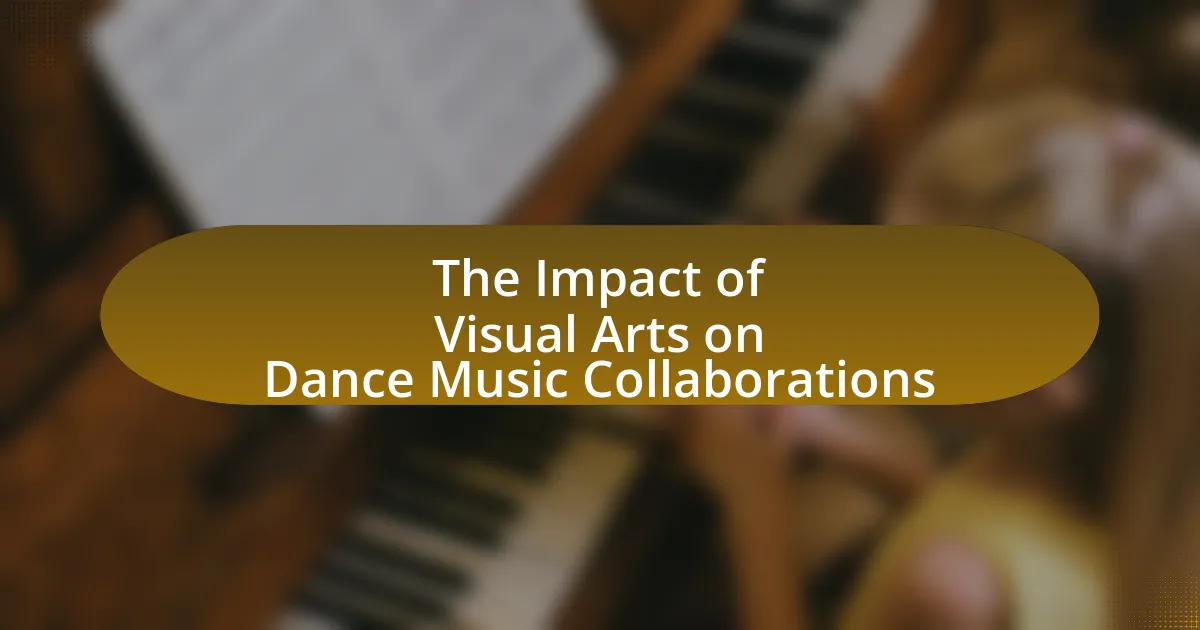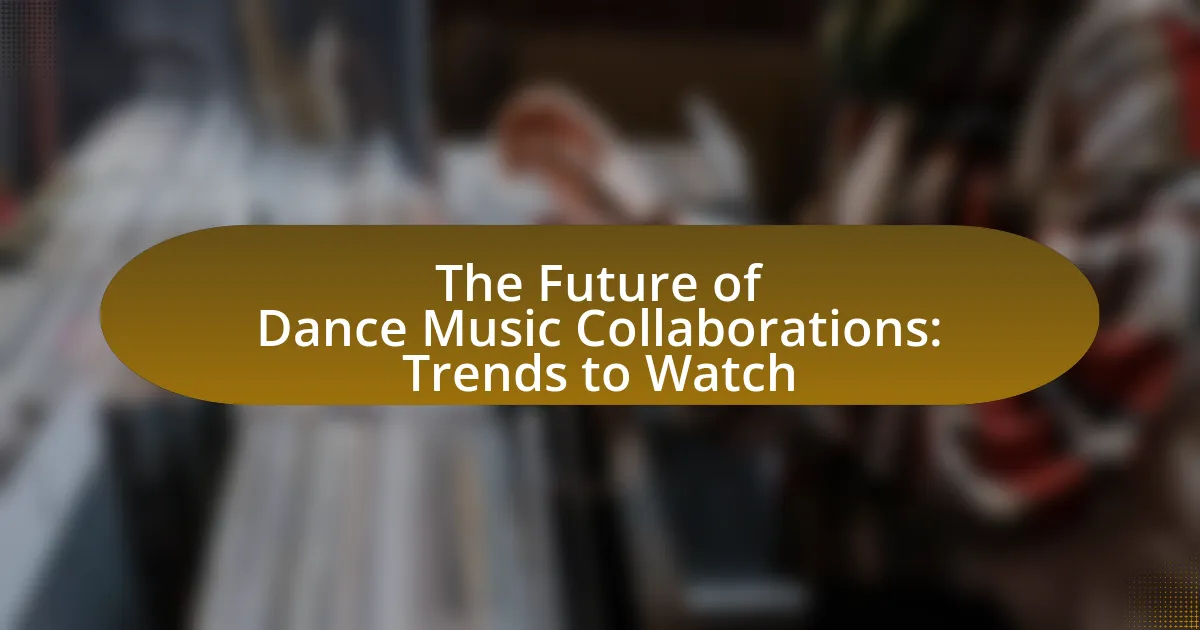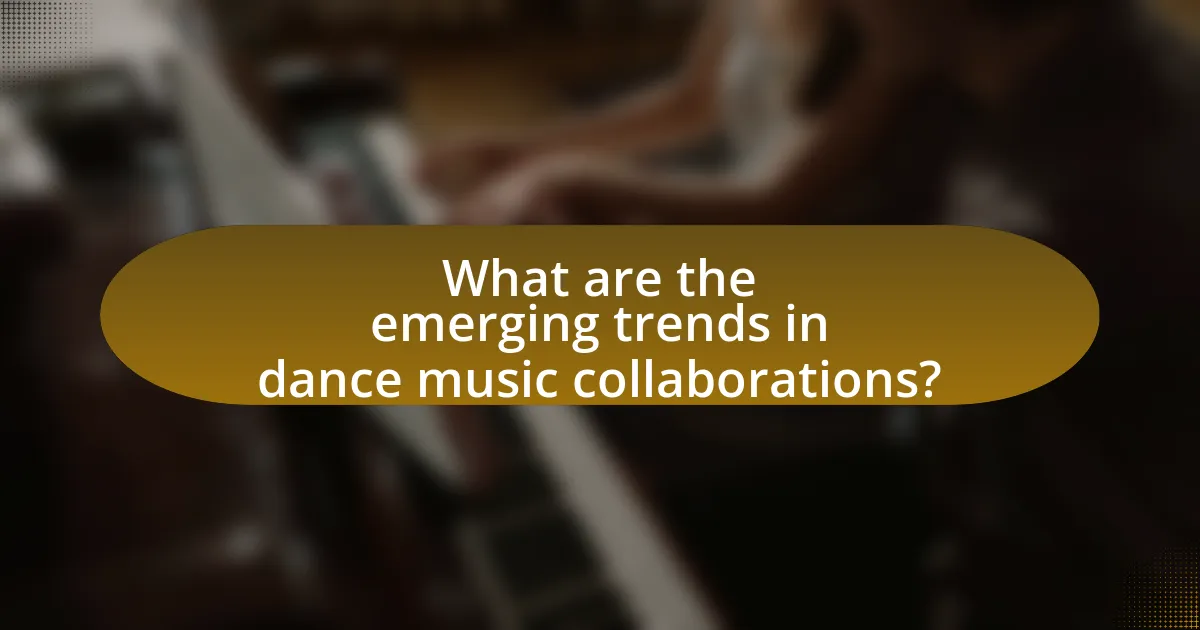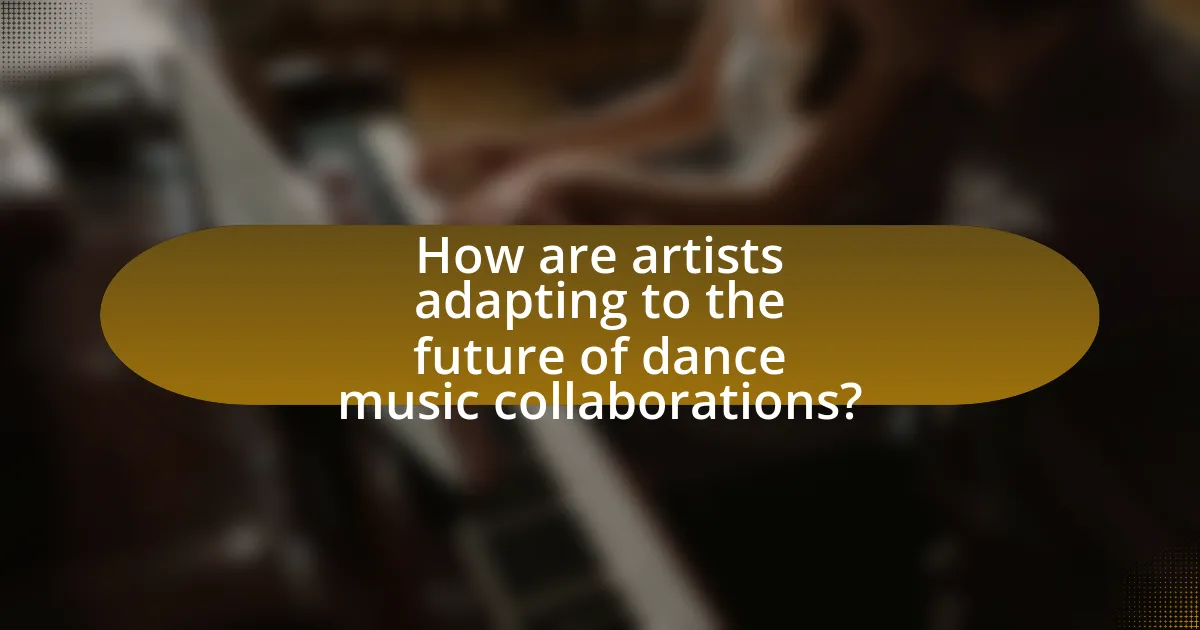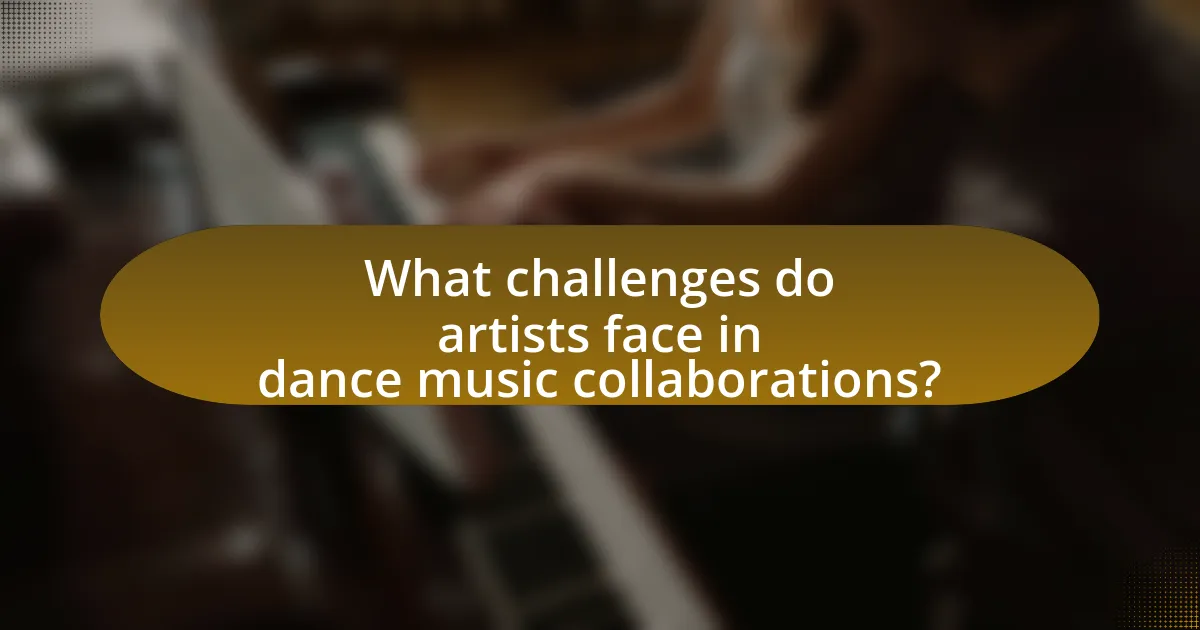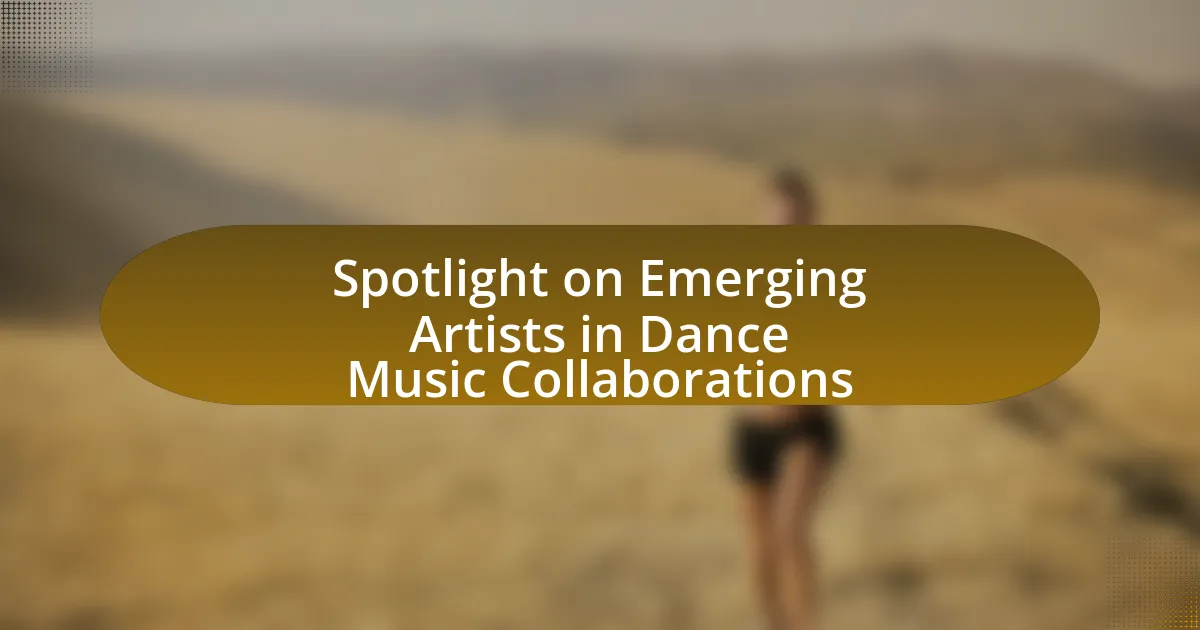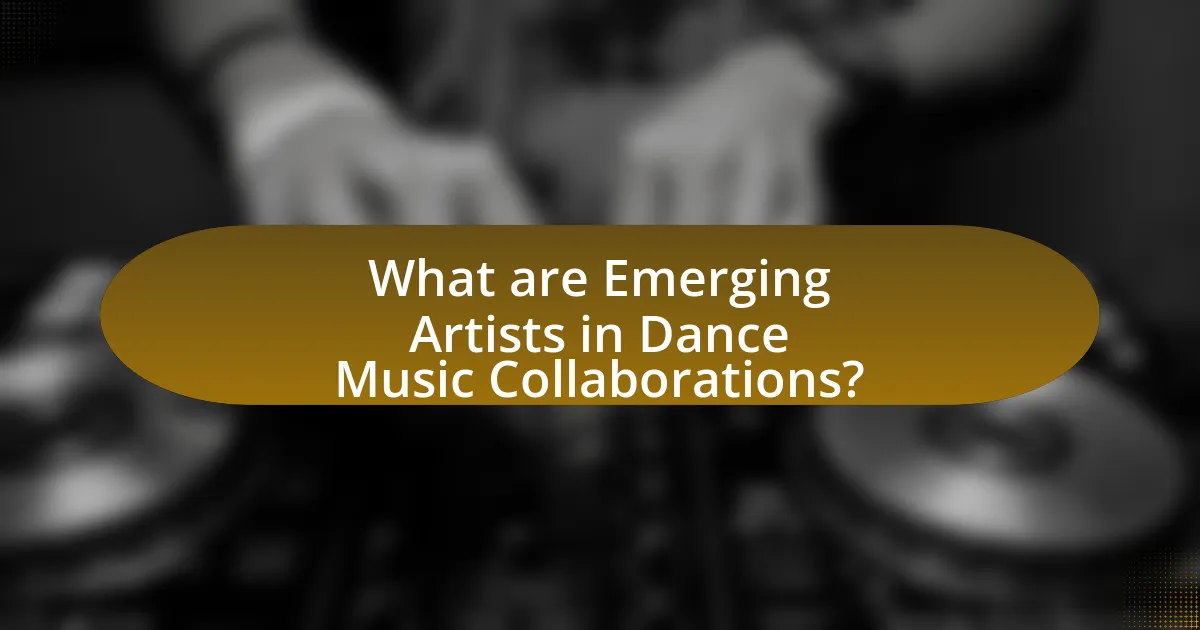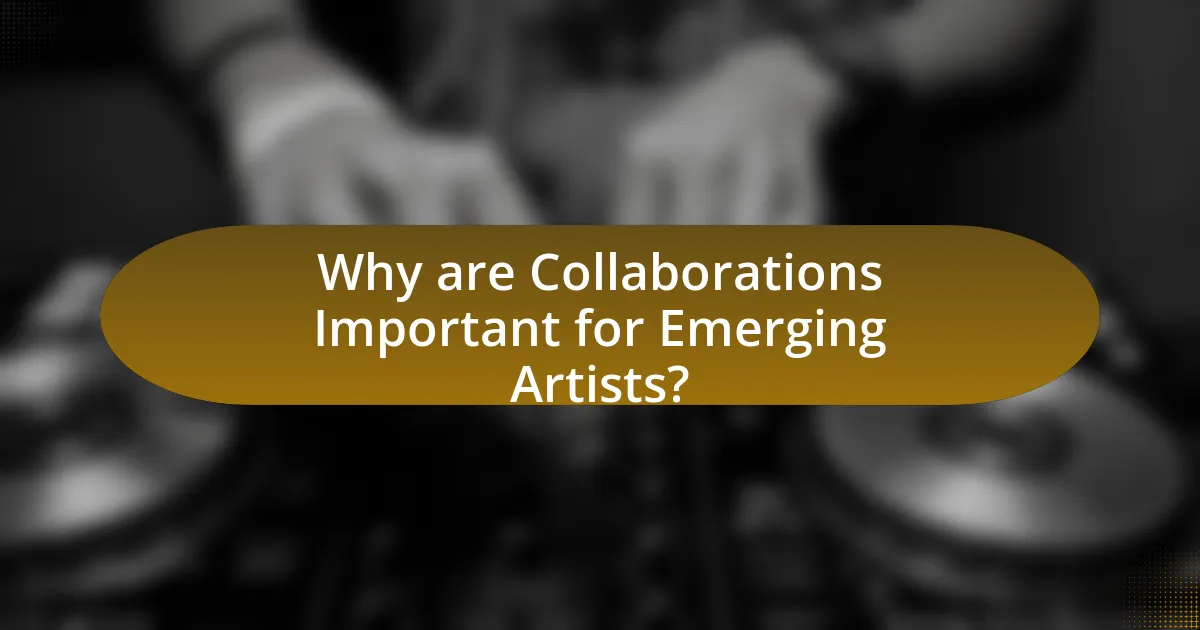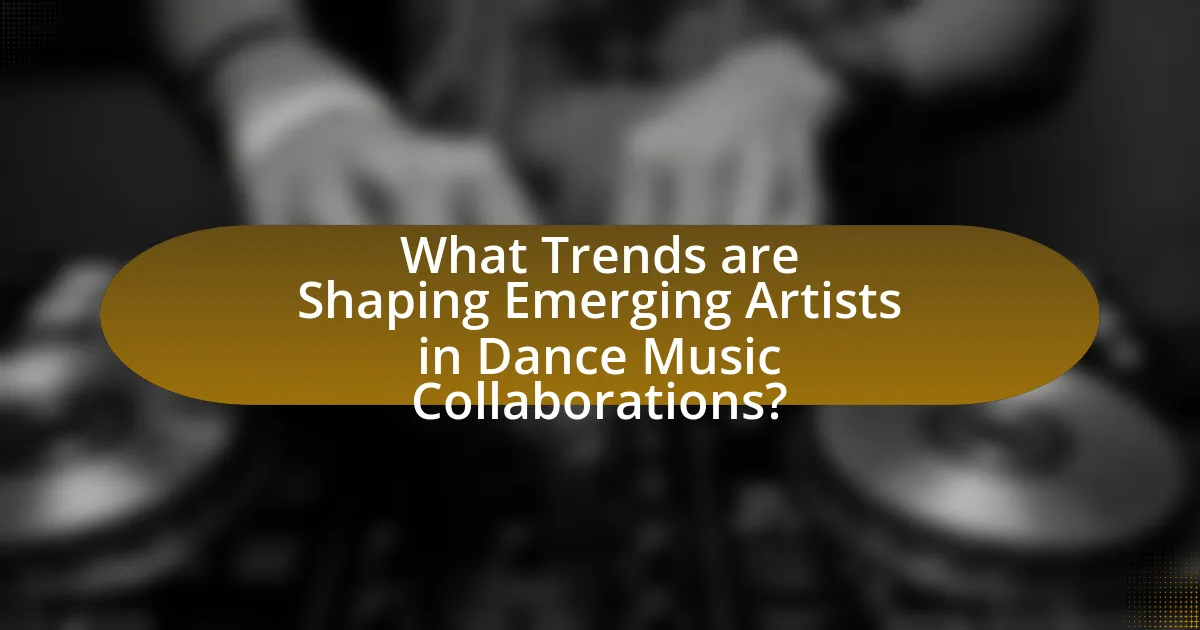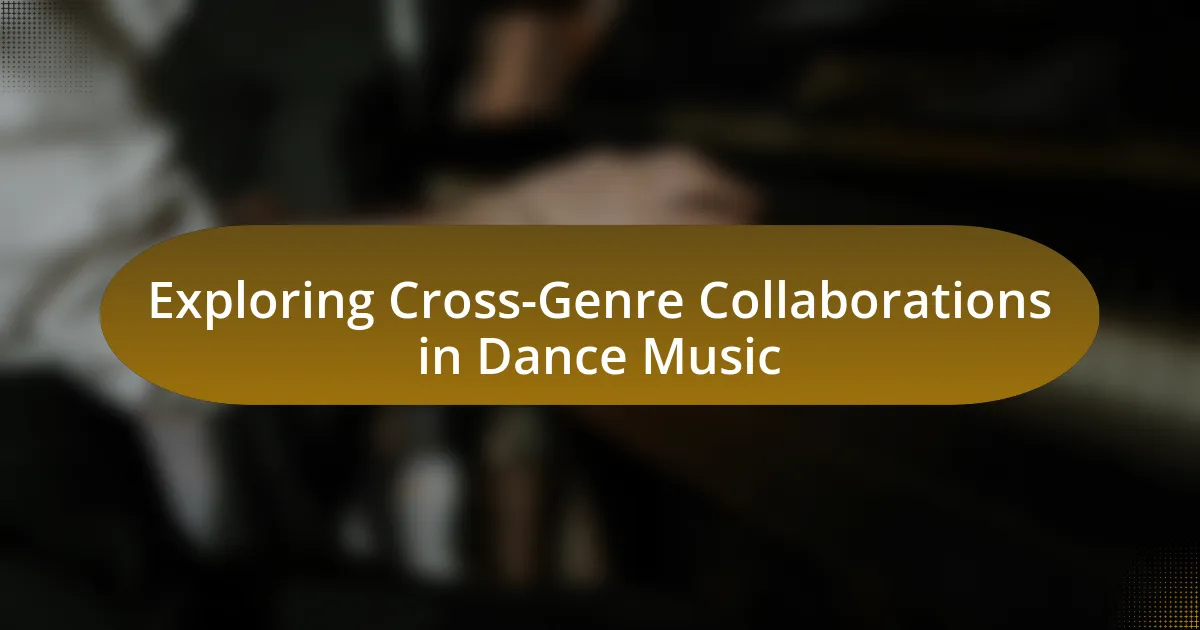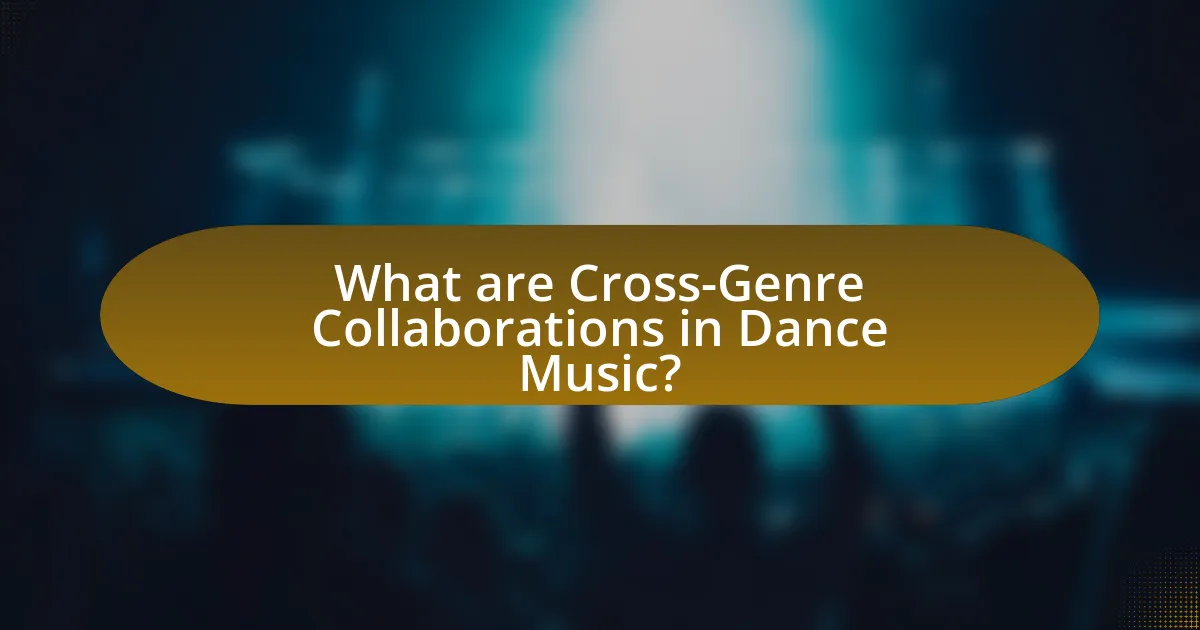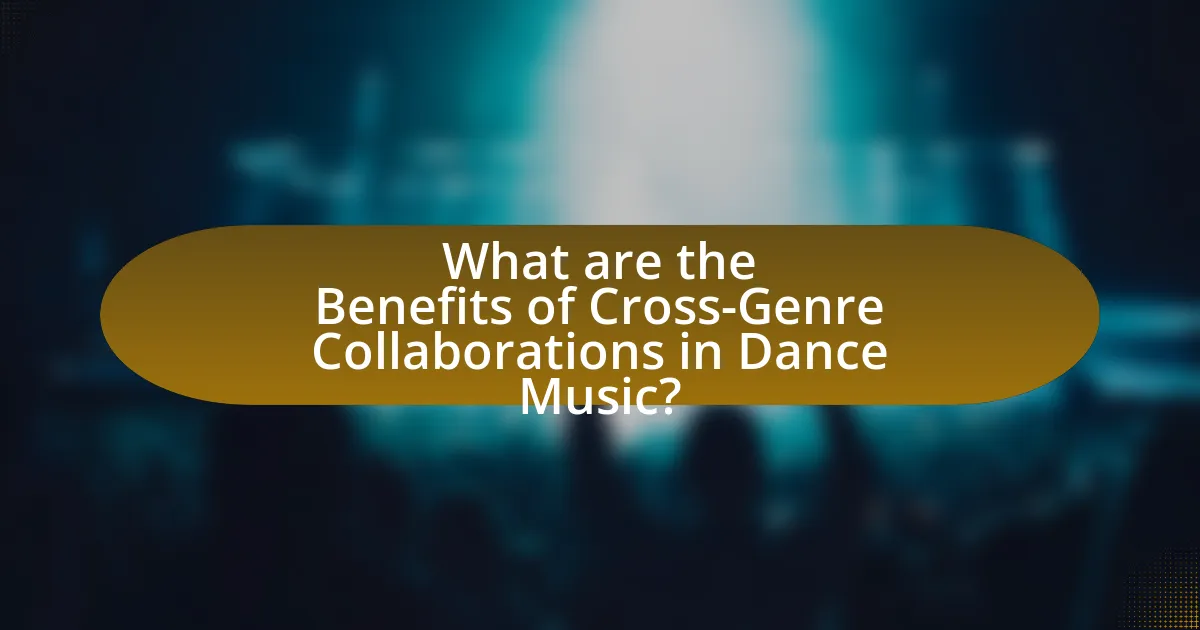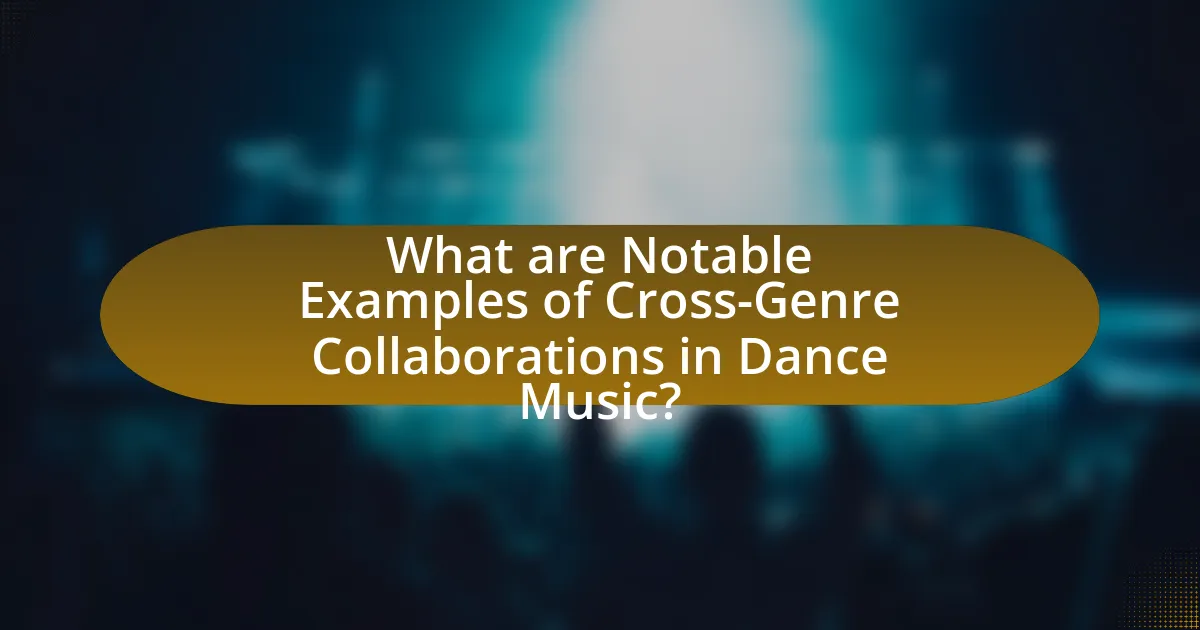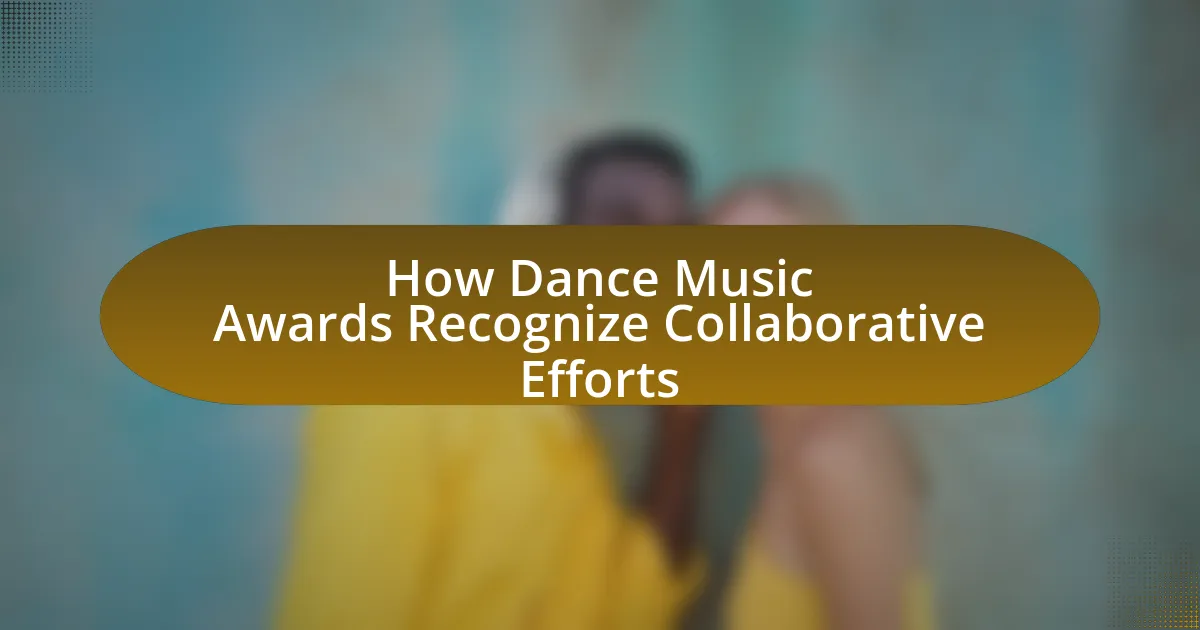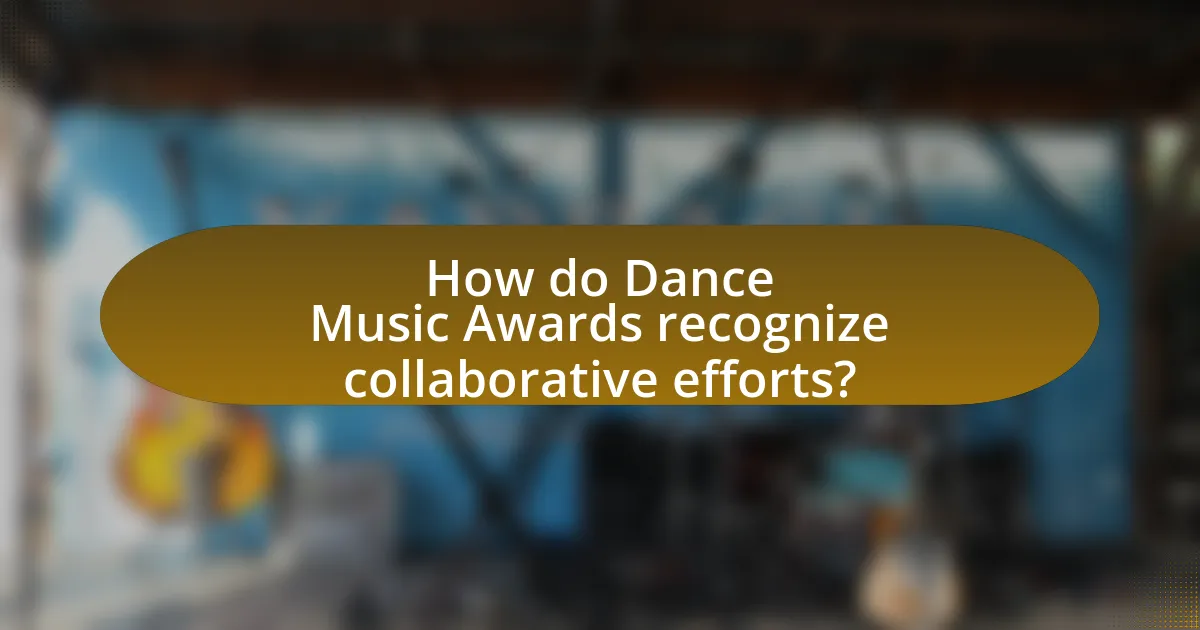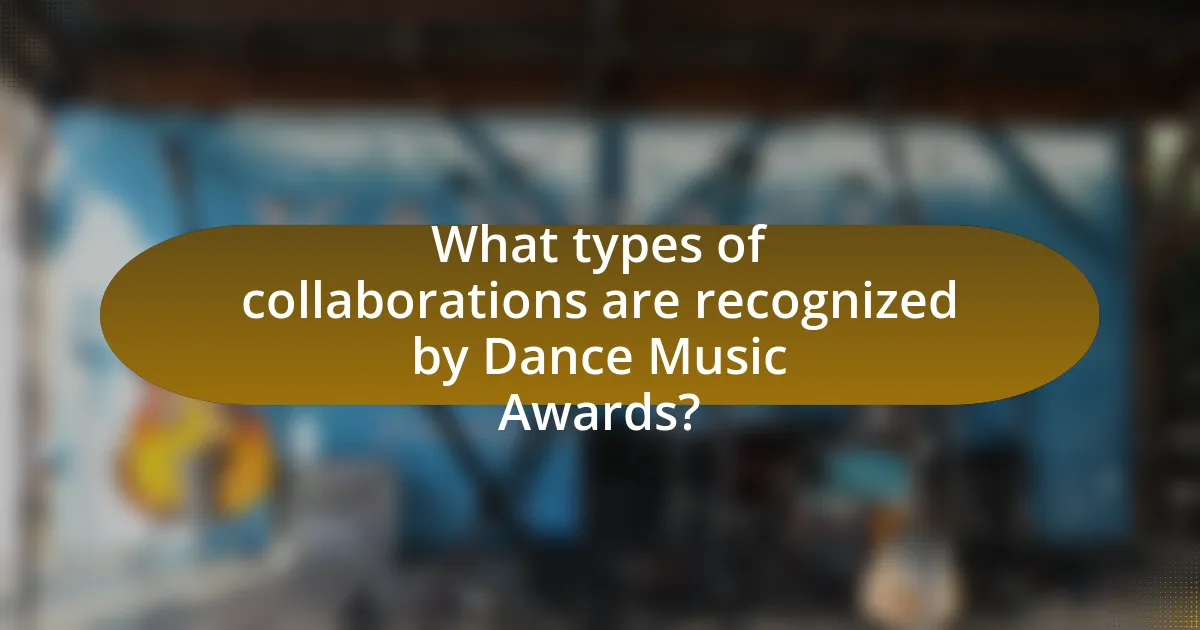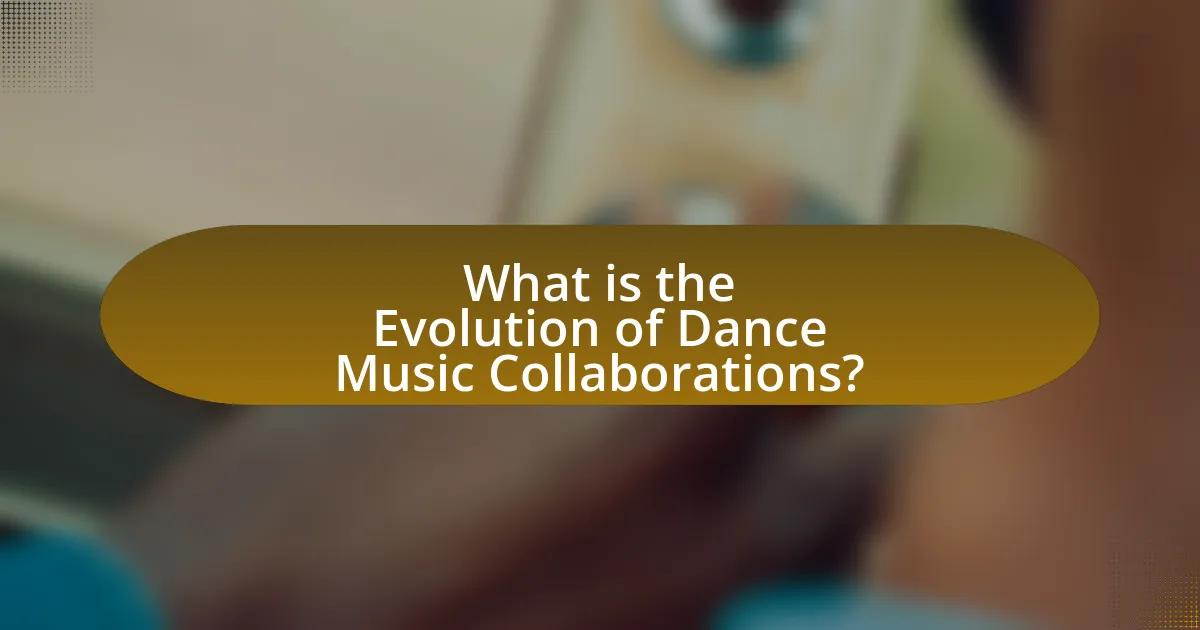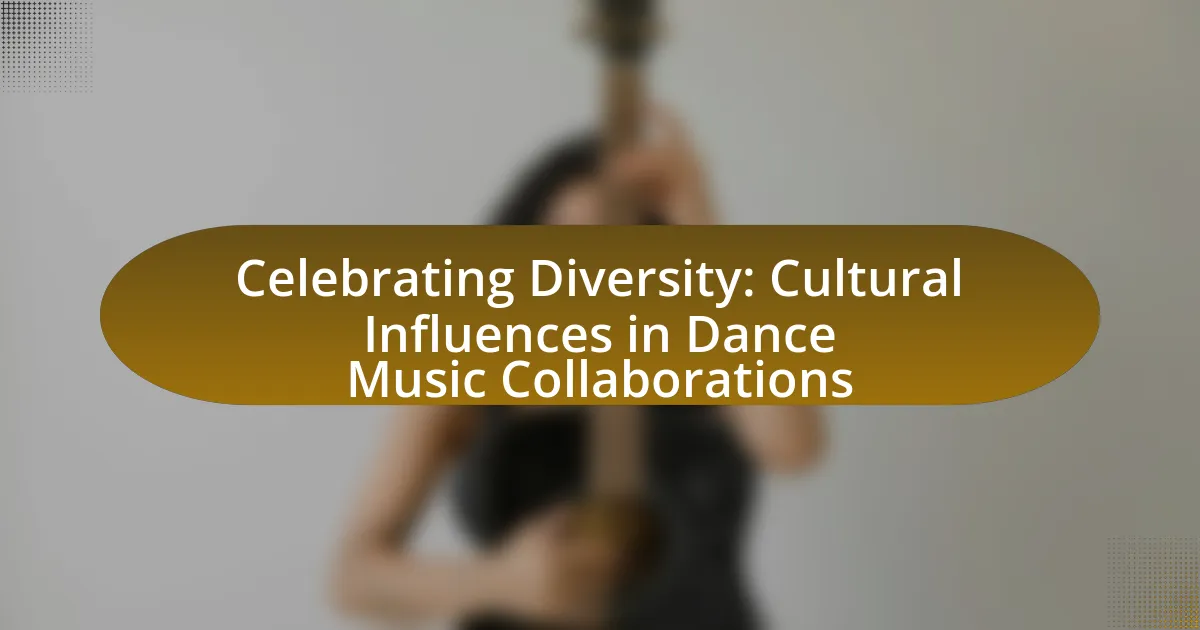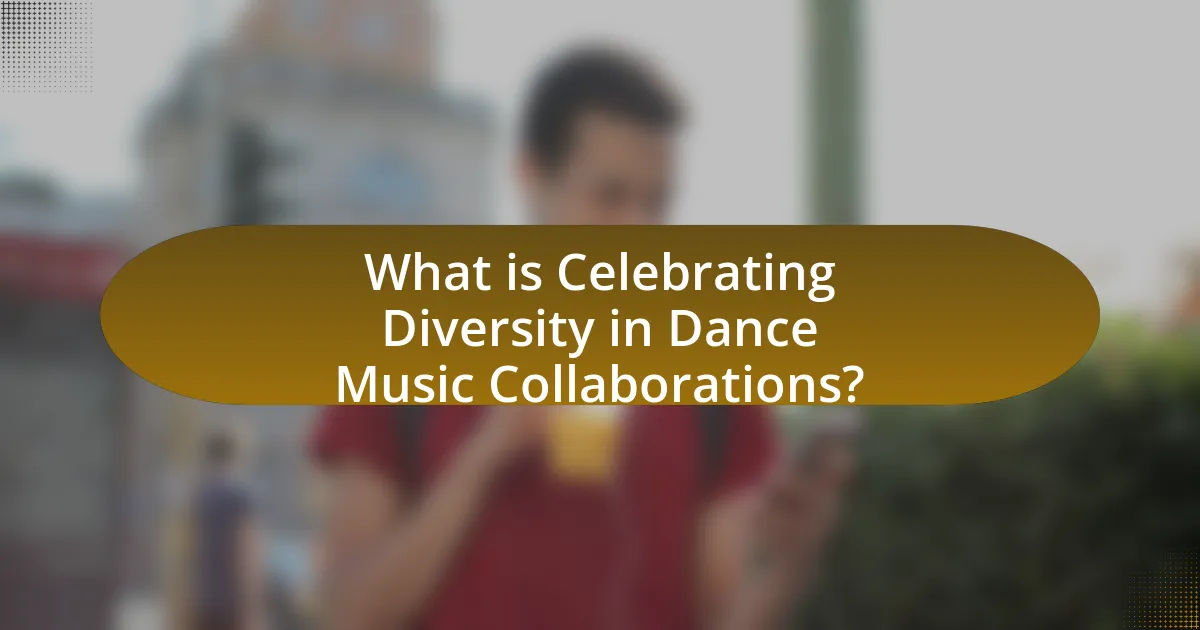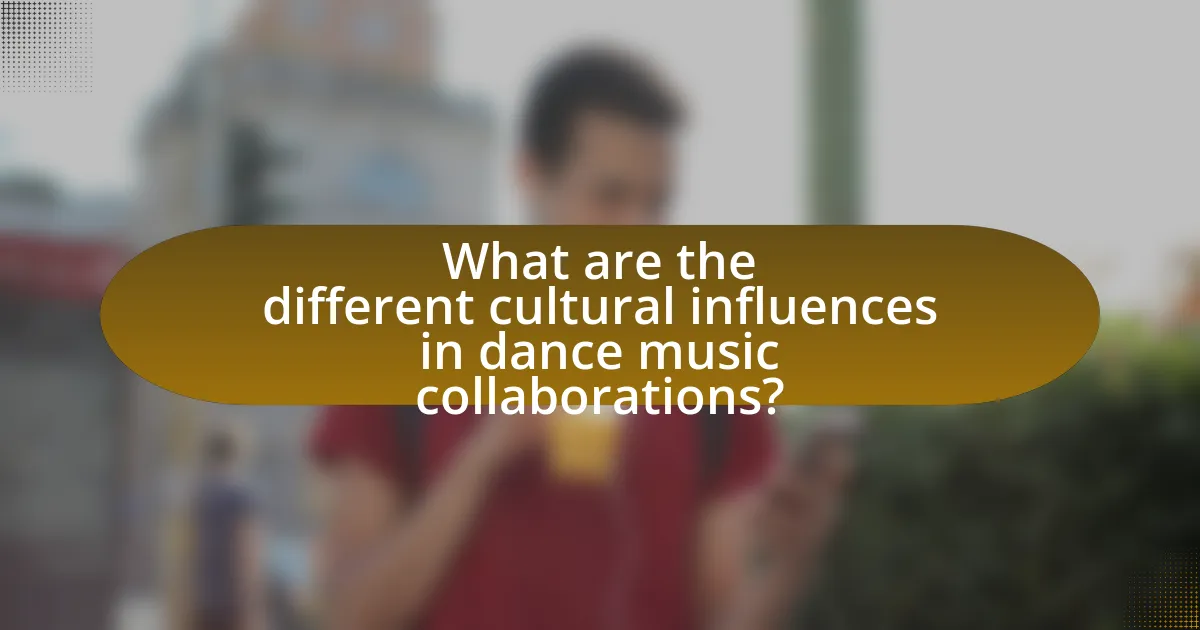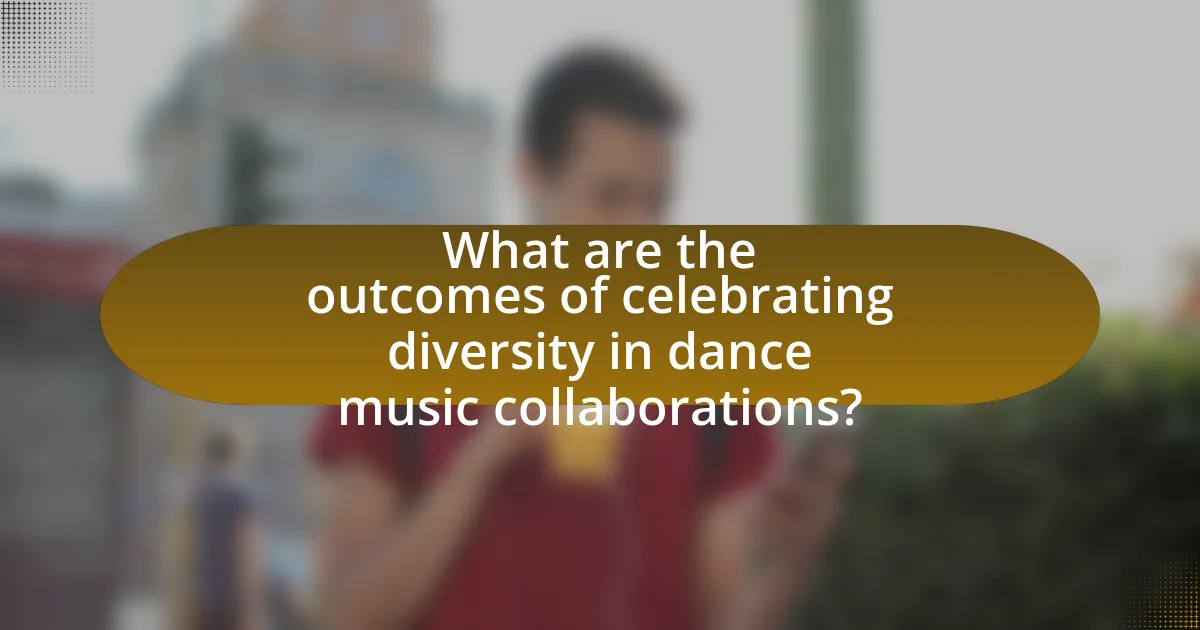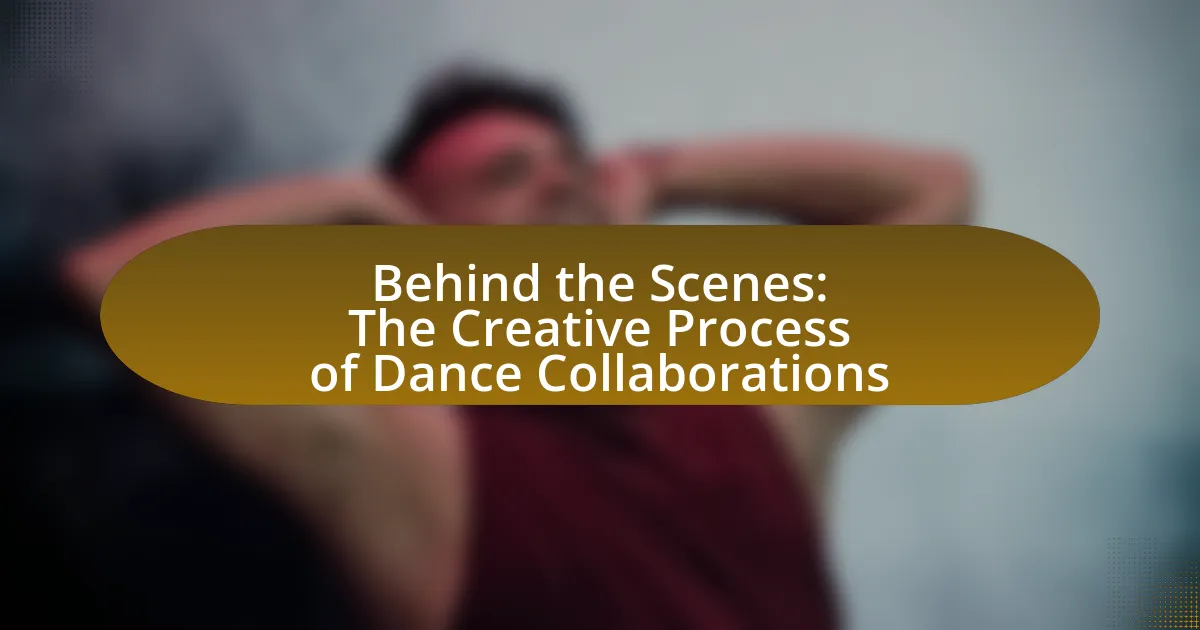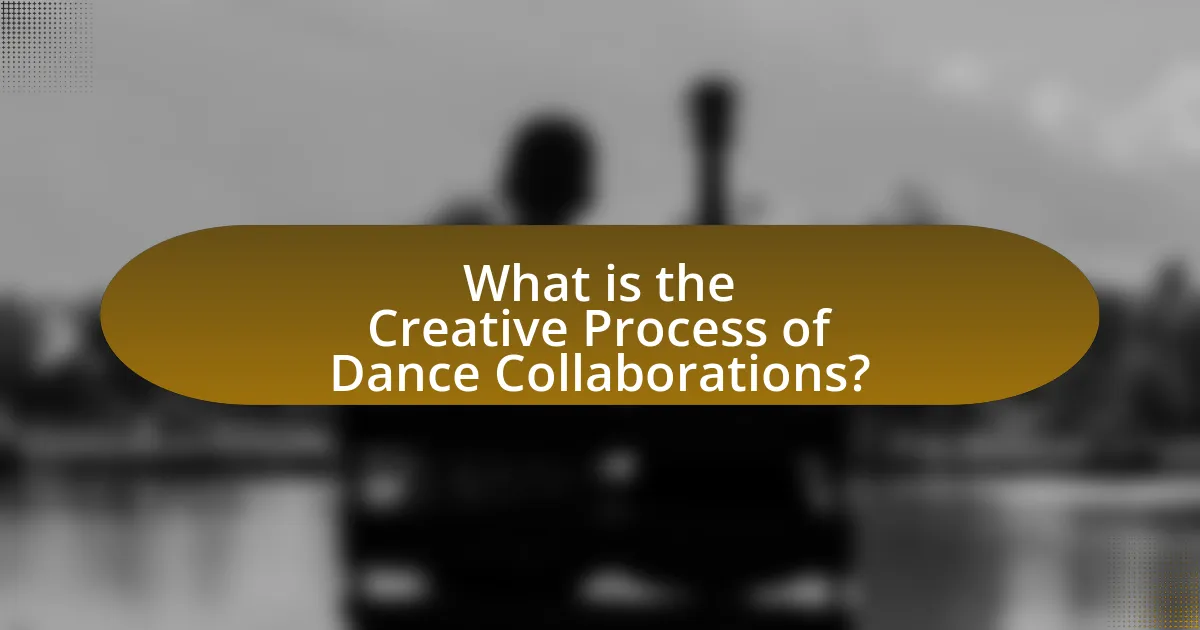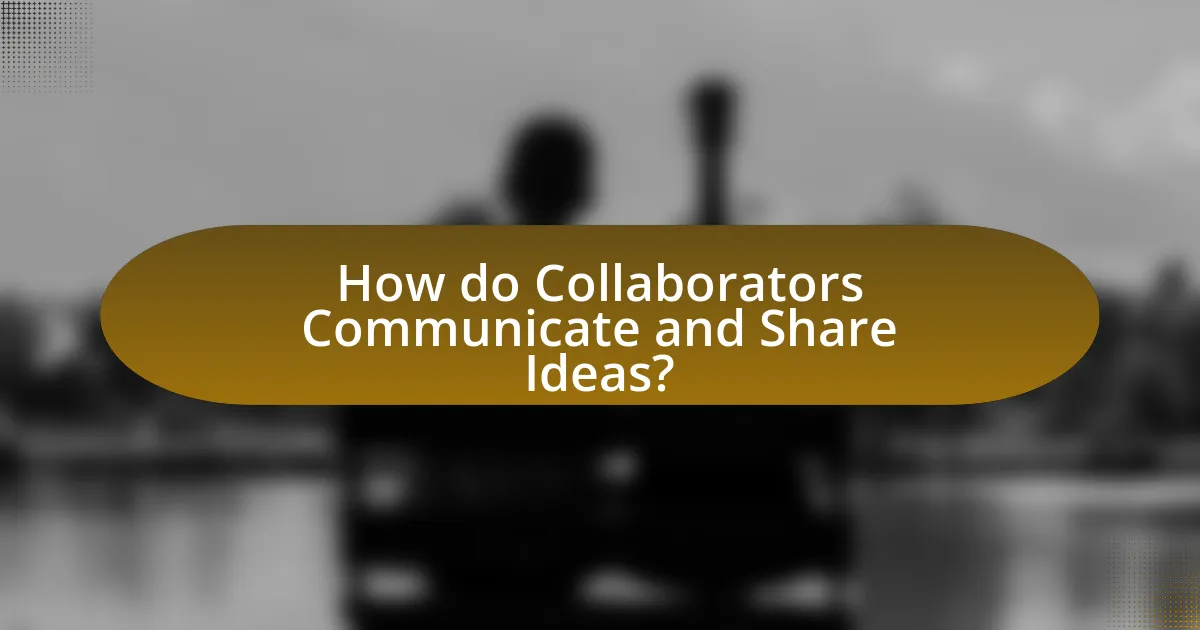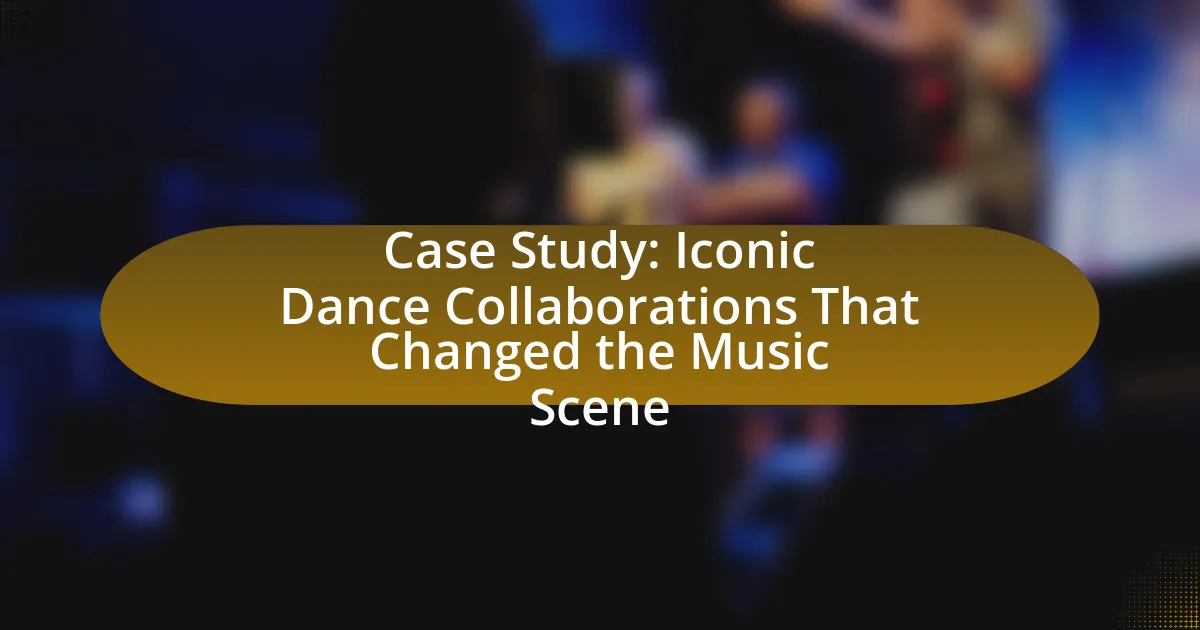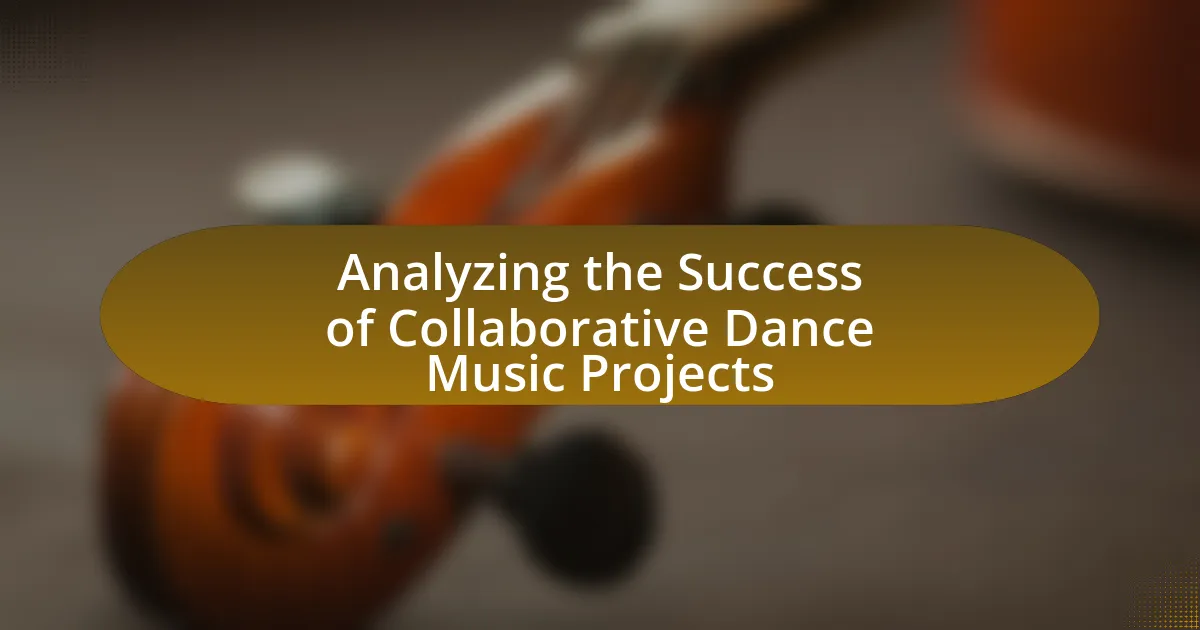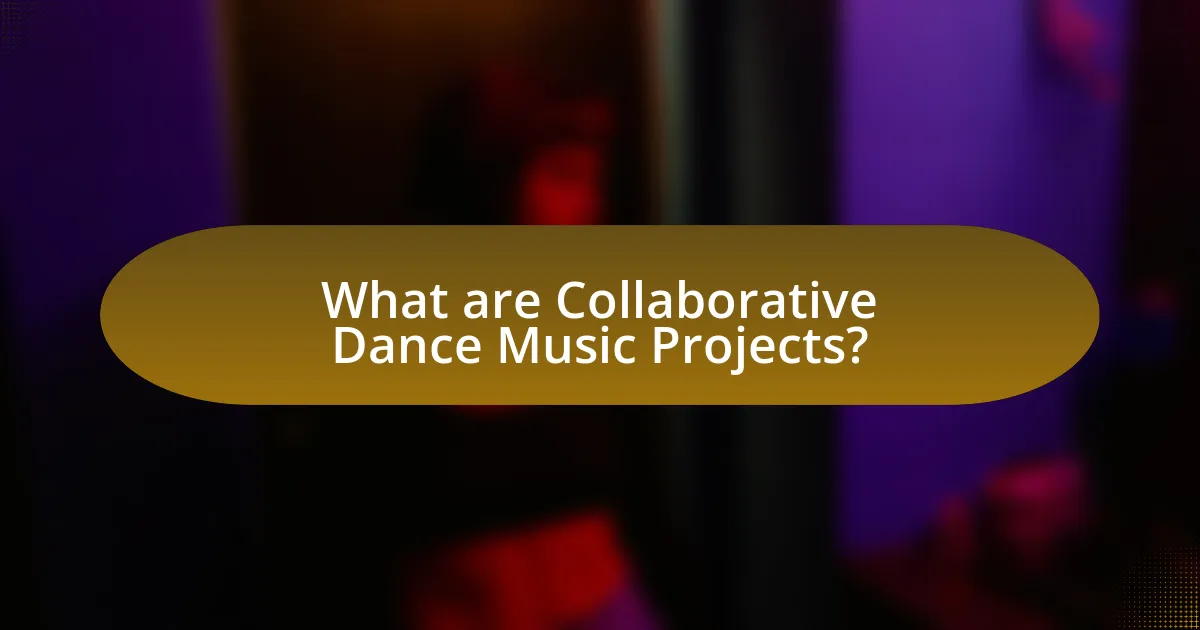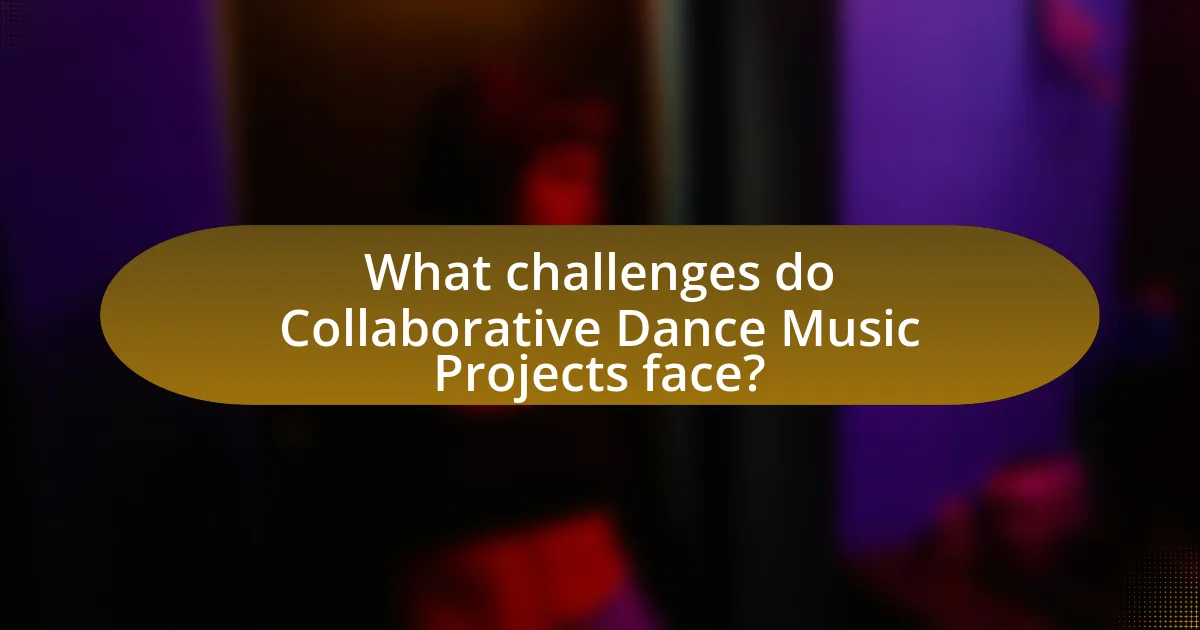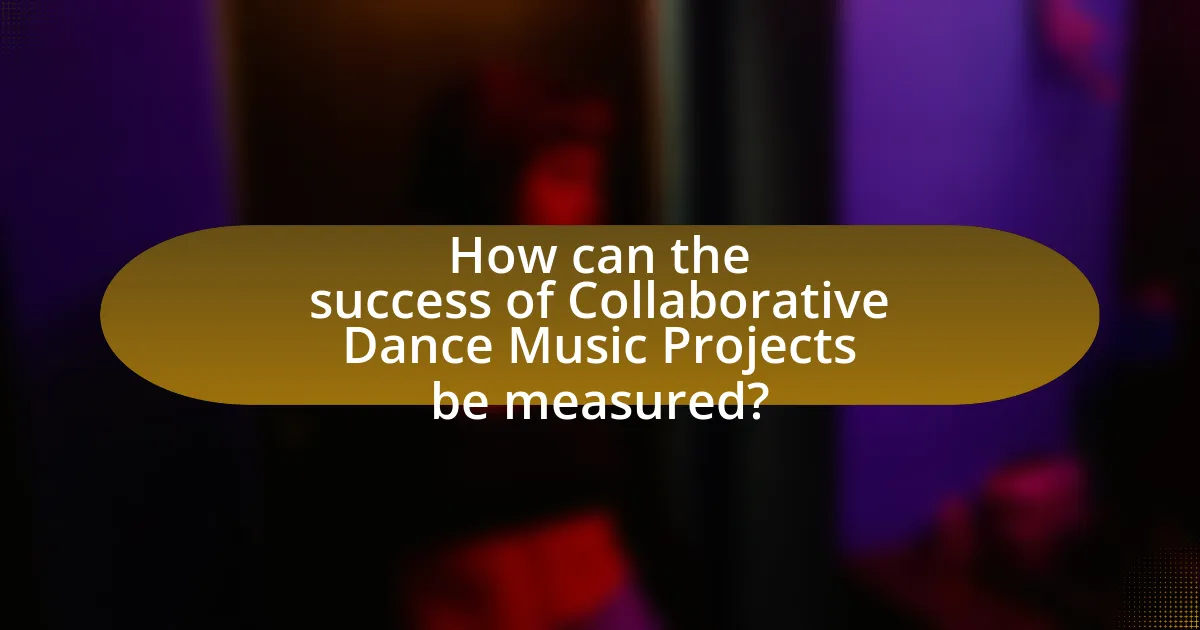The article explores the critical role of community in dance music, emphasizing how grassroots collaborations foster creativity, inclusivity, and support among artists and fans. It highlights the historical significance of local scenes in shaping genres like house and techno, and discusses the characteristics and benefits of grassroots initiatives, including increased visibility for emerging artists and the promotion of diverse musical expressions. Additionally, the article addresses the challenges faced by grassroots movements, such as financial constraints and barriers to collaboration, while showcasing successful examples and innovative approaches that enhance the dance music experience. Ultimately, it underscores the long-term benefits of community engagement for artists and the sustainability of the dance music industry.
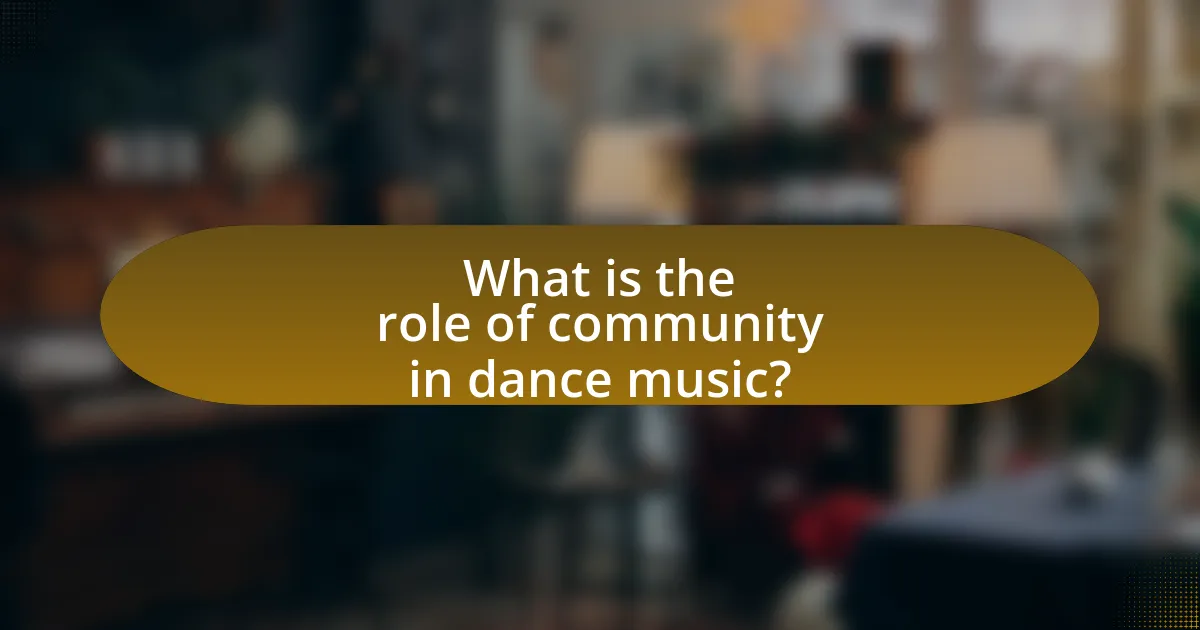
What is the role of community in dance music?
The role of community in dance music is essential for fostering creativity, collaboration, and support among artists and fans. Communities create spaces for shared experiences, enabling individuals to connect through music, which enhances the overall cultural landscape of the genre. For instance, grassroots movements have historically driven the evolution of dance music, as seen in the emergence of genres like house and techno in local scenes such as Chicago and Detroit during the 1980s. These communities not only provide a platform for emerging artists but also cultivate a sense of belonging and identity among participants, reinforcing the social fabric that sustains the dance music culture.
How do grassroots collaborations shape the dance music scene?
Grassroots collaborations significantly shape the dance music scene by fostering community engagement and promoting diverse musical expressions. These collaborations often emerge from local artists, promoters, and fans who work together to create events, share resources, and support one another, leading to a more inclusive and vibrant music culture. For instance, initiatives like community-run festivals and underground parties allow emerging artists to showcase their talents, which can lead to wider recognition and opportunities within the industry. Additionally, grassroots movements often prioritize local talent over commercial interests, ensuring that the music scene remains authentic and reflective of its community’s unique identity. This dynamic has been evidenced by the rise of collectives such as the Berlin-based collective Kater Blau, which emphasizes collaboration and local participation, thereby enriching the overall dance music landscape.
What are the key characteristics of grassroots collaborations in dance music?
Grassroots collaborations in dance music are characterized by community-driven initiatives, inclusivity, and a focus on local talent. These collaborations often emerge from informal networks where artists, promoters, and fans work together to create events and share resources. For instance, local collectives frequently organize underground parties that prioritize emerging artists, fostering a sense of belonging and shared purpose. Additionally, grassroots efforts emphasize accessibility, often providing platforms for diverse voices and styles that may not receive mainstream attention. This approach not only strengthens community ties but also enhances the cultural richness of the dance music scene.
How do these collaborations differ from mainstream music production?
Collaborations in grassroots dance music differ from mainstream music production primarily in their emphasis on community involvement and collective creativity. Grassroots collaborations often prioritize local artists and underground scenes, fostering a sense of belonging and shared purpose, while mainstream production typically focuses on commercial viability and individual star power. For instance, grassroots projects may involve multiple contributors from diverse backgrounds, leading to innovative sounds that reflect the community’s culture, whereas mainstream productions often rely on established formulas and high-profile collaborations aimed at maximizing sales and radio play. This distinction highlights how grassroots efforts can cultivate unique musical expressions that resonate more deeply with specific audiences, contrasting with the broader, more homogenized appeal of mainstream music.
Why is community important for dance music artists?
Community is crucial for dance music artists because it fosters collaboration, support, and a shared sense of identity. This collective environment enables artists to exchange ideas, resources, and feedback, which enhances their creative output and helps them grow professionally. For instance, many successful dance music artists, such as Calvin Harris and Diplo, have built their careers through strong community ties, collaborating with other artists and engaging with their fan base. Additionally, community-driven events and festivals, like Burning Man and Tomorrowland, create platforms for artists to showcase their work, connect with audiences, and establish a loyal following, further validating the importance of community in the dance music scene.
How does community support influence an artist’s career?
Community support significantly influences an artist’s career by providing essential resources, networking opportunities, and emotional encouragement. Artists often rely on local communities for exposure, as grassroots collaborations can lead to increased visibility through events, social media sharing, and word-of-mouth promotion. For instance, a study by the University of Southern California found that artists who engage with their local communities are 30% more likely to achieve sustainable careers compared to those who do not. This support fosters a sense of belonging and loyalty, which can translate into a dedicated fan base, ultimately enhancing an artist’s marketability and success in the competitive dance music industry.
What role does audience engagement play in building a dance music community?
Audience engagement is crucial in building a dance music community as it fosters a sense of belonging and connection among fans. Engaged audiences participate actively in events, share experiences on social media, and contribute to discussions, which enhances community cohesion. For instance, studies show that events with high audience interaction, such as live polls or social media integration, lead to increased loyalty and attendance, reinforcing the community’s growth. Additionally, platforms like SoundCloud and Bandcamp allow fans to interact directly with artists, creating a feedback loop that strengthens relationships and encourages collaborative projects within the community.
What challenges do grassroots collaborations face in the dance music industry?
Grassroots collaborations in the dance music industry face significant challenges, including limited funding, lack of access to resources, and difficulties in gaining visibility. Limited funding restricts the ability of grassroots initiatives to secure venues, promote events, and pay artists, which can hinder the growth and sustainability of these collaborations. Additionally, the lack of access to industry networks and professional resources makes it challenging for grassroots groups to connect with established artists and industry professionals, further isolating them. Visibility issues arise from the saturated market, where mainstream artists and labels dominate, making it difficult for grassroots efforts to attract attention and audiences. These challenges collectively impede the potential impact and reach of grassroots collaborations in the dance music scene.
How do financial constraints impact grassroots initiatives?
Financial constraints significantly limit grassroots initiatives by restricting their ability to secure resources, organize events, and sustain operations. These limitations often lead to reduced outreach and engagement, as initiatives struggle to attract participants and maintain momentum without adequate funding. For instance, a study by the National Endowment for the Arts found that organizations with limited financial resources often face challenges in marketing and promoting their activities, which directly affects community involvement and support. Consequently, financial constraints can hinder the growth and impact of grassroots movements, particularly in dynamic fields like dance music, where community engagement is essential for success.
What barriers exist for collaboration among diverse artists?
Barriers for collaboration among diverse artists include cultural differences, communication challenges, and resource disparities. Cultural differences can lead to misunderstandings or misinterpretations of artistic intent, which may hinder collaboration. Communication challenges arise from varying levels of language proficiency or differing communication styles, making it difficult for artists to express their ideas effectively. Resource disparities, such as access to funding, venues, or technology, can limit opportunities for collaboration, particularly for artists from marginalized backgrounds. These barriers can create significant obstacles in fostering inclusive and productive artistic partnerships.
How can grassroots collaborations enhance the dance music experience?
Grassroots collaborations enhance the dance music experience by fostering community engagement and creativity among artists and fans. These collaborations create inclusive environments where local talent can showcase their work, leading to diverse musical expressions that resonate with audiences. For instance, events organized by grassroots collectives often prioritize local artists, allowing them to gain exposure and connect with their community, which can result in a more vibrant and dynamic music scene. Additionally, studies have shown that community-driven initiatives in music can increase participation and investment in local culture, further enriching the overall dance music experience.
What innovative approaches are being used in grassroots dance music collaborations?
Innovative approaches in grassroots dance music collaborations include the use of digital platforms for remote collaboration, community-driven events, and the integration of diverse musical influences. Digital platforms like Splice and SoundCloud enable artists from different locations to co-create music seamlessly, fostering a global exchange of ideas. Community-driven events, such as local festivals and pop-up parties, encourage collaboration among local artists and promote a sense of belonging. Additionally, the blending of various musical genres and cultural influences in these collaborations enhances creativity and broadens the appeal of the music produced. These methods reflect a shift towards inclusivity and accessibility in the dance music scene, empowering artists and communities alike.
How do technology and social media facilitate grassroots collaborations?
Technology and social media facilitate grassroots collaborations by providing platforms for communication, organization, and mobilization among community members. These tools enable individuals to connect instantly, share resources, and coordinate efforts, which is essential for grassroots movements. For instance, social media platforms like Facebook and Twitter allow users to create events, share updates, and rally support quickly, leading to increased participation and engagement. According to a study by the Pew Research Center, 69% of adults in the U.S. use social media, highlighting its widespread reach and potential for mobilizing grassroots initiatives. Additionally, technology tools such as crowdfunding platforms enable grassroots organizations to raise funds efficiently, further enhancing their capacity to collaborate and implement projects.
What are some successful examples of grassroots collaborations in dance music?
Successful examples of grassroots collaborations in dance music include the creation of the “Burning Man” festival and the “Block Party” events organized by local communities. Burning Man, which began in 1986, has evolved into a massive annual gathering that emphasizes community, self-expression, and collaboration among artists and musicians. The festival showcases numerous collaborative art installations and performances, fostering a sense of unity among participants. Block Party events, often organized by local DJs and community members, serve as platforms for emerging artists to collaborate and perform, strengthening local music scenes and promoting inclusivity. These grassroots initiatives demonstrate the power of community in shaping the dance music landscape.
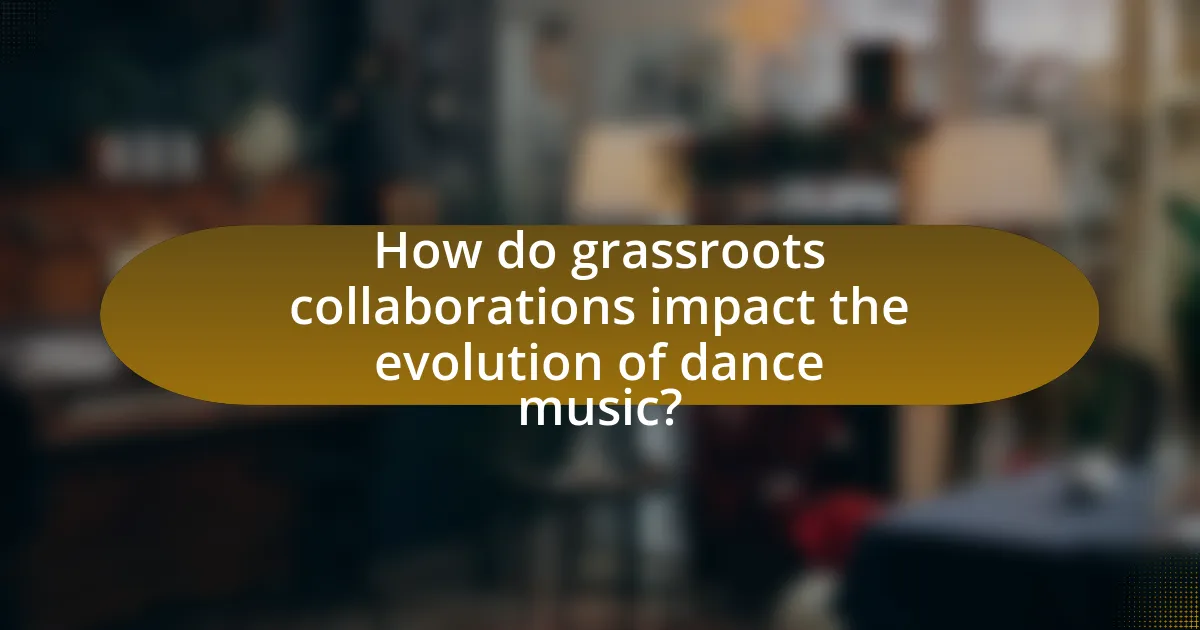
How do grassroots collaborations impact the evolution of dance music?
Grassroots collaborations significantly influence the evolution of dance music by fostering innovation and diversity within the genre. These collaborations often emerge from local communities, where artists, producers, and fans come together to share ideas, resources, and skills, leading to the creation of new sounds and styles. For instance, the rise of genres like house and techno in the 1980s can be attributed to grassroots movements in cities like Chicago and Detroit, where local DJs and musicians collaborated in underground clubs and warehouses. This collaborative spirit not only democratizes music production but also allows for the blending of cultural influences, resulting in a richer and more varied musical landscape. The impact of grassroots collaborations is evident in the continuous emergence of subgenres and the global spread of dance music, as local scenes contribute unique elements that resonate with wider audiences.
What trends are emerging from grassroots collaborations in dance music?
Emerging trends from grassroots collaborations in dance music include increased diversity in genres, community-driven events, and the rise of local collectives. These collaborations often blend various musical styles, fostering innovation and inclusivity, as seen in events like block parties and underground raves that feature a mix of artists from different backgrounds. Additionally, local collectives are gaining prominence, as they create platforms for artists to collaborate and share resources, which enhances the sense of community and support within the dance music scene. This trend is supported by the growing number of independent labels and collectives that prioritize artist development and community engagement over commercial success.
How do these trends reflect cultural shifts within the community?
Trends in grassroots collaborations within dance music reflect significant cultural shifts in the community by promoting inclusivity and diversity. These collaborations often bring together artists from various backgrounds, fostering a sense of unity and shared identity. For instance, the rise of collectives that prioritize marginalized voices demonstrates a shift towards valuing representation and equity in music production and performance. Additionally, the increasing popularity of community-driven events, such as local festivals and workshops, highlights a move away from commercialized music scenes towards more authentic, grassroots experiences that emphasize local culture and community engagement. This shift is evidenced by the growing number of events that feature diverse lineups and encourage participation from underrepresented groups, thereby reshaping the cultural landscape of the dance music community.
What influence do grassroots collaborations have on genre development?
Grassroots collaborations significantly influence genre development by fostering innovation and diversity within music styles. These collaborations often emerge from local communities, where artists share resources, ideas, and skills, leading to the creation of new sounds and subgenres. For instance, the rise of house music in Chicago during the 1980s was heavily driven by local DJs and producers working together in underground clubs, which allowed for experimentation and the blending of various musical influences. This collaborative environment not only nurtured unique artistic expressions but also helped establish a sense of identity and belonging among artists and audiences, further propelling the evolution of the genre.
How do grassroots collaborations foster inclusivity in dance music?
Grassroots collaborations foster inclusivity in dance music by creating accessible platforms for diverse voices and talents. These collaborations often emerge from local communities, allowing underrepresented artists to participate in the music scene without the barriers typically imposed by mainstream industry standards. For instance, initiatives like community-run events and collectives prioritize collaboration over competition, encouraging participation from various cultural backgrounds and skill levels. This approach not only democratizes the music-making process but also enriches the genre with a wider array of influences and perspectives, ultimately leading to a more inclusive dance music culture.
What initiatives promote diversity within grassroots dance music communities?
Initiatives that promote diversity within grassroots dance music communities include inclusive event programming, mentorship programs, and community outreach efforts. Inclusive event programming focuses on featuring diverse artists and genres, ensuring representation across various demographics. Mentorship programs connect experienced artists with underrepresented individuals, fostering skill development and career growth. Community outreach efforts engage local populations, encouraging participation from marginalized groups and creating safe spaces for expression. These initiatives collectively enhance diversity and inclusivity, contributing to a richer cultural landscape within grassroots dance music.
How can grassroots efforts address representation in dance music?
Grassroots efforts can address representation in dance music by fostering inclusive platforms that amplify diverse voices and promote underrepresented artists. Initiatives such as community-driven events, workshops, and local collectives create spaces where marginalized groups can showcase their talents and connect with audiences. For instance, organizations like Women in Music and initiatives such as the Black Artist Database actively work to highlight and support artists from diverse backgrounds, thereby increasing visibility and representation in the industry. These grassroots movements not only challenge the status quo but also encourage a more equitable music scene by prioritizing diversity in lineups and programming.
What are the long-term benefits of grassroots collaborations for the dance music community?
Grassroots collaborations provide long-term benefits for the dance music community by fostering a sense of belonging, enhancing creativity, and promoting sustainability. These collaborations create networks that empower local artists, enabling them to share resources, knowledge, and opportunities, which leads to a more vibrant and diverse music scene. For instance, events organized by local collectives often showcase emerging talent, allowing artists to gain exposure and build a following. Additionally, grassroots initiatives often prioritize community engagement, which strengthens local support and encourages a loyal audience base. Research indicates that communities with strong collaborative networks experience increased cultural output and economic resilience, demonstrating the lasting impact of these grassroots efforts on the dance music landscape.
How do these collaborations contribute to sustainability in the music industry?
Collaborations in the music industry contribute to sustainability by fostering community engagement and promoting eco-friendly practices. These partnerships often involve artists, producers, and organizations working together to create events that prioritize environmental responsibility, such as reducing waste and utilizing renewable energy sources. For instance, initiatives like “Green Music Australia” have shown that music festivals can significantly lower their carbon footprints through collective efforts, demonstrating that grassroots collaborations can lead to measurable sustainability outcomes.
What legacy do grassroots collaborations leave for future generations of artists?
Grassroots collaborations leave a legacy of inclusivity and innovation for future generations of artists. These collaborations foster a sense of community, enabling artists to share resources, knowledge, and creative ideas, which can lead to the emergence of new genres and styles in dance music. Historical examples, such as the rise of house music in Chicago during the 1980s, illustrate how grassroots efforts among local DJs and producers created a vibrant scene that influenced global music trends. This collaborative spirit encourages future artists to engage with their communities, promoting diversity and collective creativity, which are essential for the evolution of artistic expression.
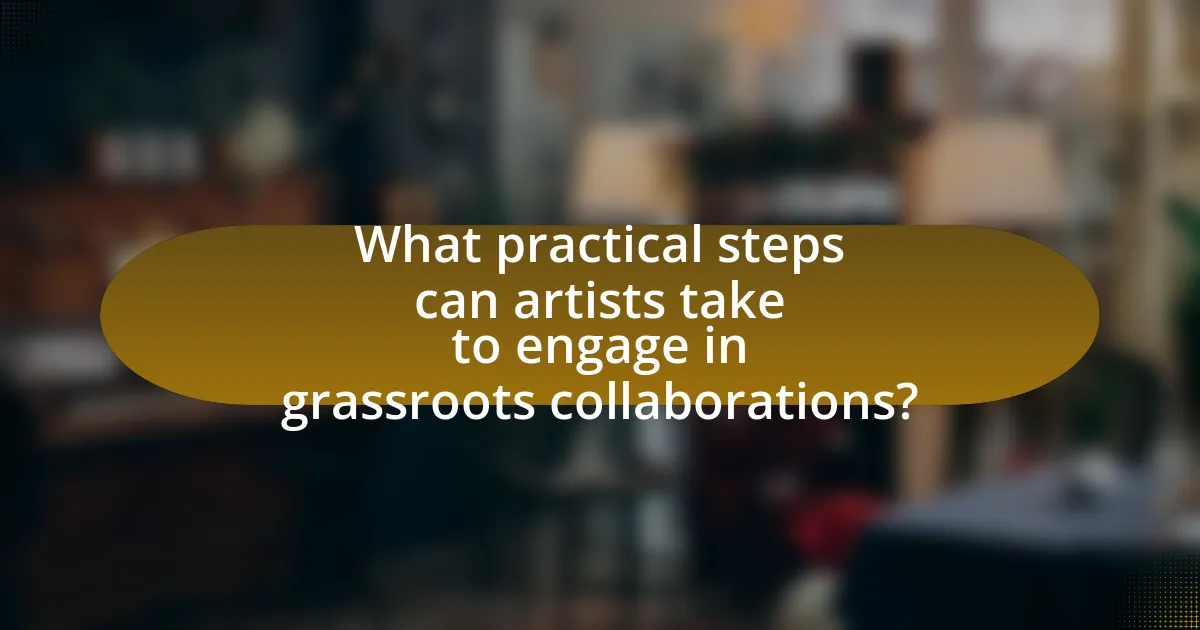
What practical steps can artists take to engage in grassroots collaborations?
Artists can engage in grassroots collaborations by actively participating in local community events and initiatives. By attending and contributing to local festivals, workshops, and open mic nights, artists can connect with other creatives and build relationships that foster collaboration. Additionally, artists should leverage social media platforms to promote their work and seek out like-minded individuals or groups interested in collaborative projects. Research indicates that community engagement enhances artistic innovation and strengthens local cultural ties, as seen in various successful grassroots movements in the arts.
How can artists effectively network within their local dance music community?
Artists can effectively network within their local dance music community by actively participating in events, collaborating with other musicians, and utilizing social media platforms. Engaging in local events such as parties, festivals, and workshops allows artists to meet peers and industry professionals, fostering relationships that can lead to future collaborations. Collaborating on projects or performances with other artists enhances visibility and creates a sense of community. Additionally, leveraging social media platforms like Instagram and Facebook enables artists to connect with local fans and fellow musicians, share their work, and promote events, which is crucial for building a supportive network. According to a study by the University of Southern California, networking within local communities significantly increases opportunities for collaboration and career advancement in the music industry.
What resources are available for artists looking to collaborate?
Artists looking to collaborate can access various resources, including online platforms, local community centers, and social media groups. Online platforms such as SoundCloud, Bandcamp, and collaborative tools like Splice facilitate connections among artists by allowing them to share music and projects. Local community centers often host workshops and events that encourage collaboration among artists in the same geographic area. Additionally, social media groups on platforms like Facebook and Reddit provide spaces for artists to network, share ideas, and find potential collaborators. These resources are essential for fostering grassroots collaborations in the dance music scene, as they create opportunities for artists to connect and work together.
How can artists leverage social media to promote grassroots initiatives?
Artists can leverage social media to promote grassroots initiatives by creating engaging content that resonates with their audience and encourages community participation. By utilizing platforms like Instagram, Facebook, and Twitter, artists can share stories, updates, and calls to action related to their initiatives, fostering a sense of belonging and urgency among followers. For instance, a study by the Pew Research Center indicates that 69% of adults in the U.S. use social media, making it an effective tool for reaching a broad audience. Additionally, artists can collaborate with local organizations and influencers to amplify their message, as partnerships can enhance visibility and credibility. Engaging with followers through live streams, Q&A sessions, and interactive posts can further strengthen community ties and drive grassroots support.
What best practices should artists follow for successful grassroots collaborations?
Artists should prioritize clear communication and shared goals for successful grassroots collaborations. Establishing open lines of dialogue ensures that all parties understand their roles and expectations, which fosters a collaborative environment. Additionally, artists should actively engage with their local communities to build relationships and trust, as this can lead to more meaningful partnerships. Research indicates that collaborations rooted in community engagement often yield higher levels of creativity and innovation, as seen in various grassroots movements within the arts. By focusing on these best practices, artists can enhance their collaborative efforts and contribute to a vibrant community in dance music.
How can clear communication enhance collaboration outcomes?
Clear communication enhances collaboration outcomes by ensuring that all participants have a shared understanding of goals, roles, and expectations. When team members communicate clearly, they can effectively coordinate their efforts, reducing misunderstandings and conflicts. Research indicates that effective communication can lead to a 25% increase in team performance, as it fosters trust and encourages open dialogue. This is particularly relevant in grassroots collaborations within dance music, where diverse perspectives and skills must align to create cohesive projects.
What strategies can be employed to ensure equitable contributions among collaborators?
To ensure equitable contributions among collaborators in grassroots dance music projects, implementing clear communication and defined roles is essential. Establishing open channels for dialogue allows all collaborators to express their ideas and concerns, fostering an inclusive environment. Additionally, assigning specific responsibilities based on individual strengths and expertise ensures that each member contributes meaningfully, which can be supported by frameworks like the RACI matrix (Responsible, Accountable, Consulted, Informed) that clarify roles and expectations. Research indicates that projects with well-defined roles and open communication experience higher satisfaction and productivity among team members, as evidenced by a study published in the Journal of Organizational Behavior, which found that clarity in roles significantly enhances collaboration outcomes.
